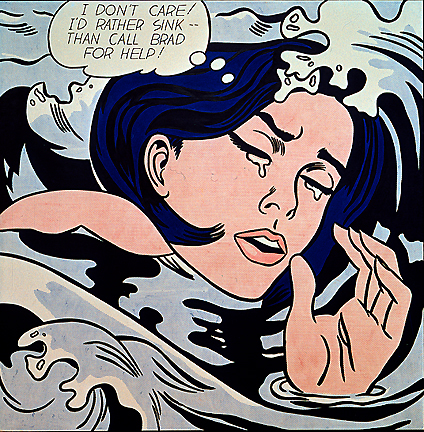Roy Lichtenstein
 From Conservapedia
From Conservapedia Roy Fox Lichtenstein (Liechtenstein) (New York City, 1923 – New York City, 1997) was an American painter, sculptor, printmaker and decorative artist; one of the central figures of American Pop Art. He attended Ohio State University, receiving a master's degree in fine arts in 1949. His works moved from the American West in a variety of modern art styles and even Abstract Expressionism to Pop Art. He manipulated the graphic and linguistic conventions of comic strips and added words to express sound effects. In 1961, Liechtenstein created his first paintings of cartoon and comic strip icons with his trademark use of Benday dots.
Roy Lichtenstein was the master of the stereotype, and the most sophisticated of the major Pop artists in terms of his analysis of visual convention and his ironic exploitation of past styles. The work for which he is now known was the product of a long apprenticeship... in 1969 he was given a retrospective at the Guggenheim Museum, which later toured America. [1]
In 1995, Liechtenstein was awarded with the National Medal of the Arts, Washington D. C. and the Kyoto Prize, Inamori Foundation, Kyoto, Japan.
One of his best known works, is Drowning Girl (1963):
The ideas of Prof. Hoyt Sherman [at Ohio State University] on perception were my earliest important influence and still affect my ideas of visual unity... Yes. Organized perception is what art is all about... Yes. He taught me how to go about learning how to look. [2] Interviews with the leaders of Pop art by Barbara A. MacAdam.
Untitled II (Brushstroke), in front of the Seagram Building in New York's Park Avenue, 1996.
See also[edit]
External links[edit]
Categories: [American Painters]
↧ Download as ZWI file | Last modified: 03/01/2023 09:21:08 | 11 views
☰ Source: https://www.conservapedia.com/Roy_Lichtenstein | License: CC BY-SA 3.0
 ZWI signed:
ZWI signed:
.jpeg)
 KSF
KSF